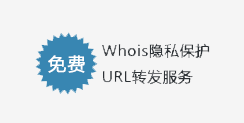新建一個“chineseurl.php”文件:
<?php
// IIS Mod-Rewrite
if (isset($_SERVER['HTTP_X_ORIGINAL_URL'])) {
$_SERVER['REQUEST_URI'] = $_SERVER['HTTP_X_ORIGINAL_URL'];
}
// IIS Isapi_Rewrite
else if (isset($_SERVER['HTTP_X_REWRITE_URL'])) {
$_SERVER['REQUEST_URI'] = $_SERVER['HTTP_X_REWRITE_URL'];
}
else
{
// Use ORIG_PATH_INFO if there is no PATH_INFO
if ( !isset($_SERVER['PATH_INFO']) && isset($_SERVER['ORIG_PATH_INFO']) )
$_SERVER['PATH_INFO'] = $_SERVER['ORIG_PATH_INFO'];
// Some IIS + PHP configurations puts the script-name in the path-info (No need to append it twice)
if ( isset($_SERVER['PATH_INFO']) ) {
if ( $_SERVER['PATH_INFO'] == $_SERVER['SCRIPT_NAME'] )
$_SERVER['REQUEST_URI'] = $_SERVER['PATH_INFO'];
else
$_SERVER['REQUEST_URI'] = $_SERVER['SCRIPT_NAME'] . $_SERVER['PATH_INFO'];
}
// Append the query string if it exists and isn't null
if (isset($_SERVER['QUERY_STRING']) && !empty($_SERVER['QUERY_STRING'])) {
$_SERVER['REQUEST_URI'] .= '?' . $_SERVER['QUERY_STRING'];
}
}
require("index.php");
?>
修改 web.config 文件:
<configuration>
<system.webServer>
<rewrite>
<rules>
<rule name="ChineseURL" stopProcessing="true">
<match url="^(tag|category)/(.*)$" />
<action type="Rewrite" url="chineseurl.php"/>
</rule>
<rule name="wordpress" patternSyntax="Wildcard">
<match url="*" />
<conditions>
<add input="{REQUEST_FILENAME}" matchType="IsFile" negate="true" />
<add input="{REQUEST_FILENAME}" matchType="IsDirectory" negate="true" />
</conditions>
<action type="Rewrite" url="index.php" />
</rule>
</rules>
</rewrite>
</system.webServer>
</configuration>
兩個文件都保存在 WordPress 的安裝目錄下。
若 WordPress 不是裝在根目錄,則需要修改“<match url=”^(tag|category)/(.*)$” />”為“<match url=”^安裝目錄/(tag|category)/(.*)$” />”。如果在固定鏈接設置里把默認的標簽前綴和分類目錄前綴(tag 和 category)改了,則更改這句里的對應內容即可。











 浙公網安備 33048302000166號
浙公網安備 33048302000166號